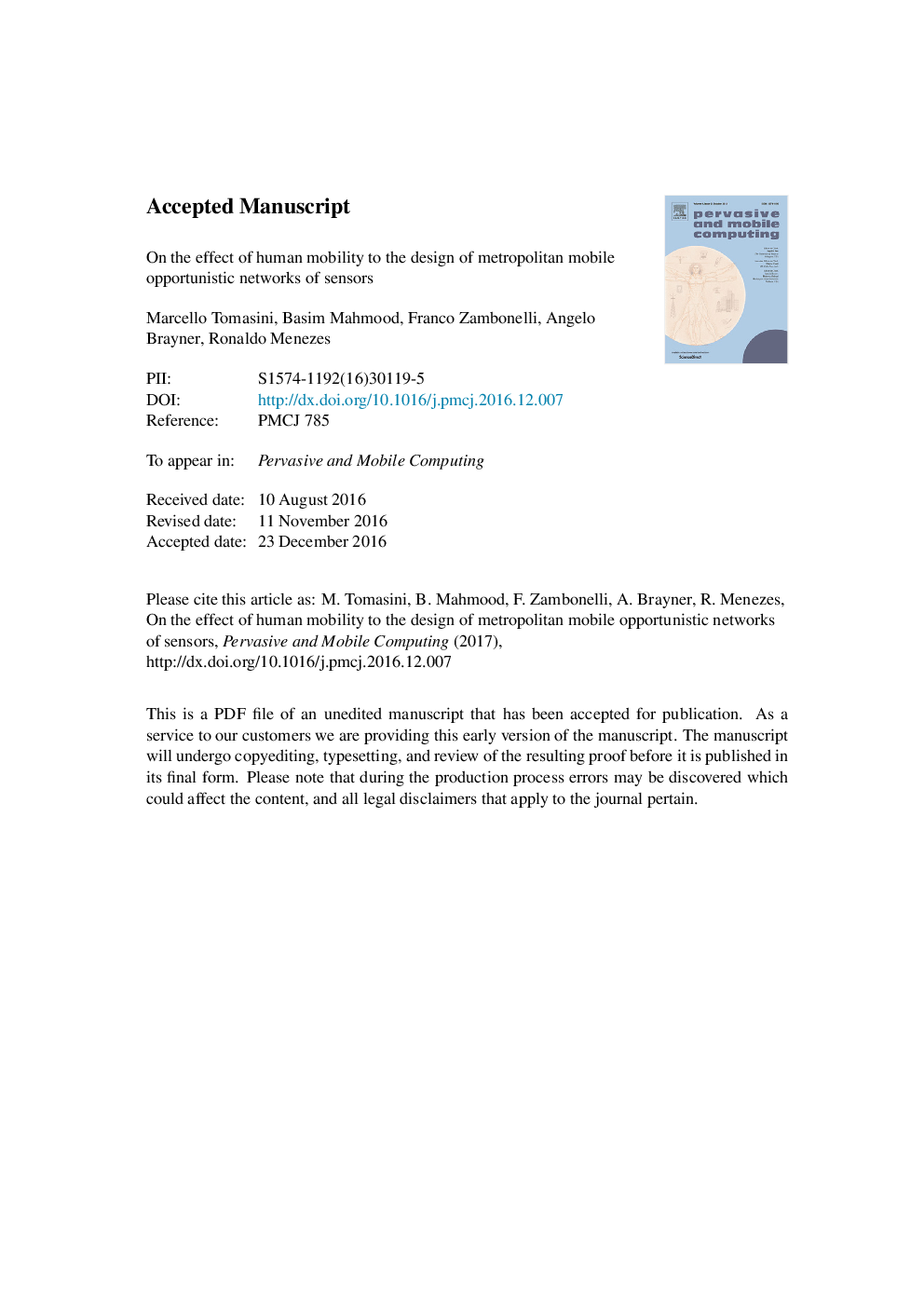| Article ID | Journal | Published Year | Pages | File Type |
|---|---|---|---|---|
| 4957473 | Pervasive and Mobile Computing | 2017 | 24 Pages |
Abstract
We live in a world where demand for monitoring natural and artificial phenomena is growing. The practical importance of Sensor Networks is continuously increasing in our society due to their broad applicability to tasks such as traffic and air-pollution monitoring, forest-fire detection, agriculture, and battlefield communication. Furthermore, we have seen the emergence of sensor technology being integrated in everyday objects such as cars, traffic lights, bicycles, phones, and even being attached to living beings such as dolphins, trees, and humans. The consequence of this widespread use of sensors is that new sensor network infrastructures may be built out of static (e.g., traffic lights) and mobile nodes (e.g., mobile phones, cars). The use of smart devices carried by people in sensor network infrastructures creates a new paradigm we refer to as Social Networks of Sensors (SNoS). This kind of opportunistic network may be fruitful and economically advantageous where the connectivity, the performance, of the scalability provided by cellular networks fail to provide an adequate quality of service. This paper delves into the issue of understanding the impact of human mobility patterns to the performance of sensor network infrastructures with respect to four different metrics, namely: detection time, report time, data delivery rate, and network coverage area ratio. Moreover, we evaluate the impact of several other mobility patterns (in addition to human mobility) to the performance of these sensor networks on the four metrics above. Finally, we propose possible improvements to the design of sensor network infrastructures.
Related Topics
Physical Sciences and Engineering
Computer Science
Computer Networks and Communications
Authors
Marcello Tomasini, Basim Mahmood, Franco Zambonelli, Angelo Brayner, Ronaldo Menezes,
